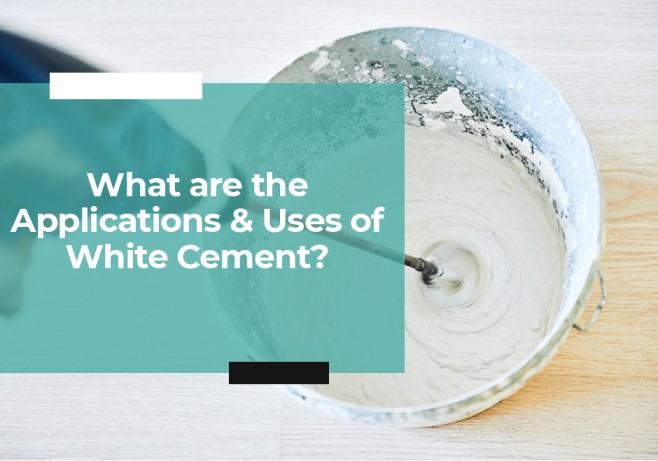Portland cement is manufactured from raw materials that are low in the iron compounds that give traditional Portland cement its grey color. For prestige construction projects and decorative work, white concrete is prepared with white portland cement and white aggregates. Because it is not cost-effective to utilize white cement for structural purposes, it is normally in the form of precast cladding panels.
White cement offers a high level of waterproofing. The structure does not require any waterproofing covering. White cement constructions have the ability to tolerate extreme temperatures. Because of its length and more strict manufacturing process, which uses 40% more energy, white cement is much more expensive than grey cement. It’s worth noting that, despite their vast differences, white and grey cement have similar setting times and strength levels. Let’s discuss the uses of white cement. Let’s check the uses of white cement.
What are the Uses of White Cement?
White cement is commonly used to ensure clear, bright, and uniform colors, such as light pastels. For structural and architectural concrete, as well as masonry and cementitious building materials, white cement offers a wide range of color options. Although many elements influence the final color and appearance of concrete and masonry materials, the color of cement plays the most critical role in colored concrete.
White cement is also utilized extensively in the production of precast components. White Portland Cement is used to create beautiful precast parts.
They’re also commonly utilized to make cast stones with a pleasing appearance. White cement is a relatively expensive cement type, so it is only used sparingly.

6 Important Properties of White Cement:
● The initial setting time is 100 minutes of white cement
● The fineness is 395 kg/m2 of white cement
● The brightness of white cement is 87%
● The compact density is 3150 kg/m3 of white density
● The bulk density is 110 kg/3 of white cement
● After one day, the compressive strength was 21 MPa, after two days it was 38 MPa, after seven days it was 61 MPa, and after 28 days it was 74 MPa.
Understanding White Cement Composition:
White cement is created from raw ingredients that are devoid of colorants like Fe, Mn, Cr, and Ti. High-grade limestone or chalk with less than 0.15 wt. percent Fe2O3 and less than 0.015 wt. percent Fe2O3 is used.
Manufacturing:
Although the manufacturing method for white cement is similar to that for grey cement, raw material selection is an important part of the process. The cement’s grey color comes from chromium, manganese, iron, copper, vanadium, nickel, and titanium oxides.
These basic components are kept to a minimum amount in white cement manufacturing. White cement is mostly made using limestone and clay as raw materials. The manufacturing process is identical to that of OPC cement, with the exception that the heat required for raw material burning is higher and the fineness is higher.
White cement is made from the following raw materials:
● LimeStone – High Carbonate & Low Iron
● Clay – High Alumina and Low Iron
● Oil / PetCoke / Rubber
● Gypsuam / Salenile
You Can Also Check This Out: What is Cement Plastering? Everything You Need to Know

